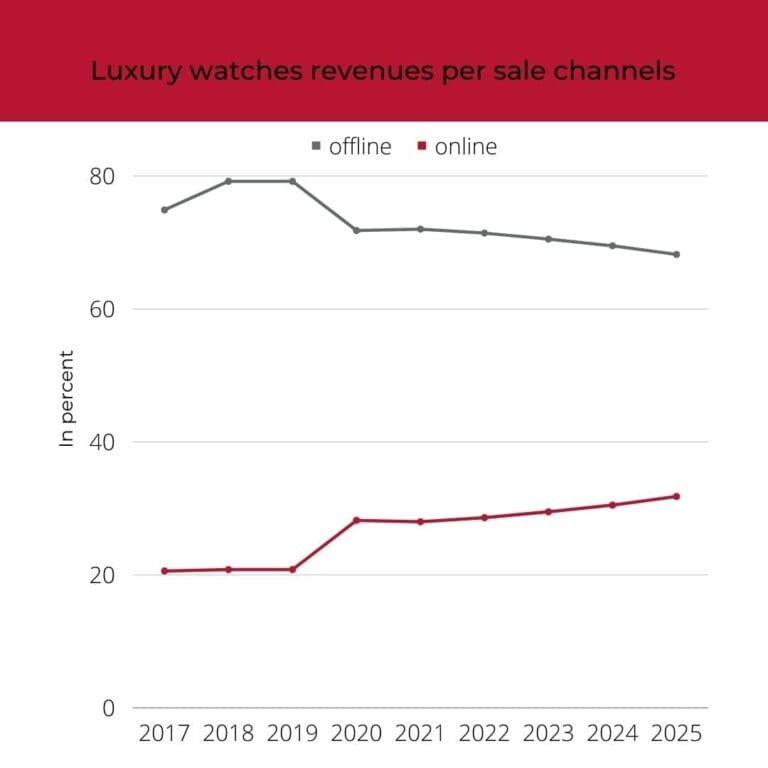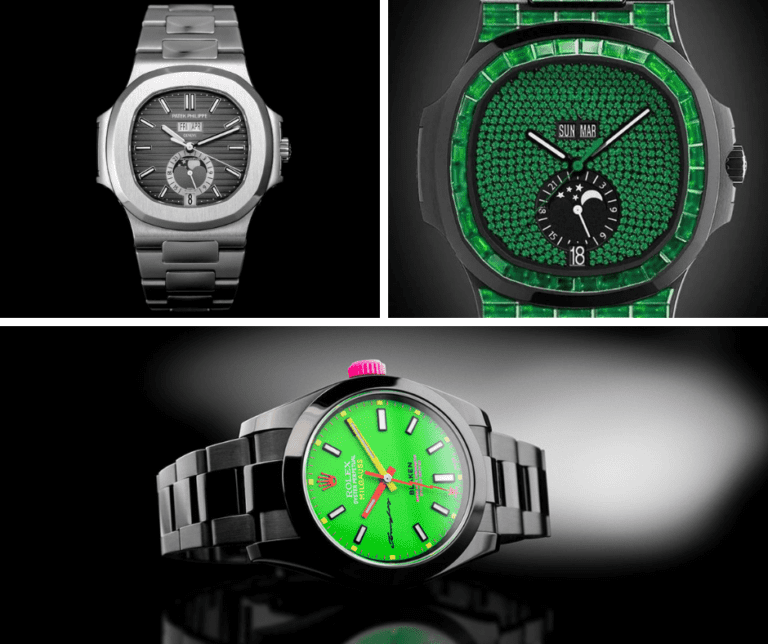The importance of 3D configurators for customer experience in the luxury industry
The importance of 3D configurators for customer experience in the luxury industry Table of Contents In the luxury industry, where attention to detail, exclusivity, and

Luxury consumers have a strong appetite for one-of-a-kind items. Therefore, when purchasing a timepiece, they pay close attention to every single detail. Adding an engraving, ornamenting a dial, or attaching a gemstone can contribute to the overall visual effect.
In this article, we will explore which benefits a 3D product configurator can bring to luxury watch brands. In particular, focusing on its relevance when dealing with a highly configurable et la personalized timepiece.

For decades, multi-brand stores have regulated the client relationship, making offline retail le backbone of the industry. Furthermore, the COVID-19 pandemic has intensified the need for luxury watch brands to begin their transition to digital.
E-commerce has experienced a significant increase in the watch industry. According to McKinsey & Company, by 2025 online sales of timepieces will double to $6 billion. They will expand from 5% of sales in 2019 pour 15 pour 20% [2]. In addition, luxury consumers are demanding a seamless and engaging online shopping experience.
Online luxury watch purchases are becoming progressively popular. In fact, in the last 6 months, 53% of US consumers reported having purchased a premium ultra-luxury watch online [2]. However, purchasing a timepiece on the web might become a challenge with only a few images at their disposal.
In this scenario, a produits 3D interactif pour l’ e-commerce may be a powerful tool for your brand. It elevates le customer experiences and boosts loyalty in the era of omnichannel experiences.
Photorealistic 3D rendering of Tag Heuer watch
1) Interactive 360° product display
Smartpixels’ configurateur produit en 3D allows customers to preview the product they wish to purchase, from all angles. The interactive configurator gives shoppers the ability to zoom in or out while rotating the product visual 360 degrees. In this manner, they have the possibility to focus even on the tiniest of details.
2) Hyper-realistic visuals
Research conducted in Japan reported the preference of consumers for buying watches in-store. One of the main reasons seemed to be the poor quality of online images.
What if, you could have the same hyperrealistic product visuals on your website?
3D technologies have become fundamental tools for e-commerce. This can be explained by the fact that buying is an emotional process. Consumers need to have a sense of touch and feel, even online. Thus, they rely more and more on visual information to make online purchases.
Today, traditional photography is having a hard time keeping it up with customer demands, but 3D renderings might be the solution. 3D photography will allow your customers to see every detail of the timepiece, in an extremely realistic way.
3) Interactive shopping experience
When dealing with a luxury purchase, your consumer will demand an mémorables, interactive, et seamless online product experience.
A real-time 3D configurator offers customers the chance to choose from a variety d' materials and to visualize in temps-réel combinations to create thousands of unique product designs in just a few clicks. By integrating an interactive configurator on your website, your clients will be able to concevoir les desired timepiece, while living an engaging and personalized experience.
4) Virtual try-on
Virtual try-on constitutes a unique feature that can highly involve consumers no matter where they are.
Thanks to digital try-on, your customers, will immediately become familiar with the iconic timepiece. They would instantly and easily comprehend the product’s unique features and envisage themselves while using it.

Product personalization represents the next frontier for high-end consumption. Across luxury categories, over 80% of customers want some form of product customization [3] . Moreover, according to McKinsey & Company, companies that excel at personalization generate 40% more revenues than average players [4].
High-end watchmakers began to offer a wide variety of customization options to their consumer base as a result of the “build your own” trend within the luxury and fashion industry. These also enhance the younger generations‘ quest for individuality et la uniqueness.
Each horology brand might wish to showcase its catalog of products online, including watch specifications, sizes, stacking, and color possibilities for each piece.
An interactive 3D product customizer enables your customers to have the chance to switch et la combiner different products’ details. They can customize products’ variants such as watch dial color, hand shape, ou de clasps, in order to obtain their unique timepiece.
Advanced personalization techniques are being used across industries, and luxury brands are now being required to meet higher standards. As a result, it appears clear that the watchmaking sector must prioritize highly individualized client experiences as the cornerstone of its digital strategy.
*Sources:
[1] Statista
[2] https://www.mckinsey.com/~/media/mckinsey/industries/retail/our%20insights/state%20of%20fashion%20watches%20and%20jewellery/state-of-fashion-watches-and-jewellery-final.pdf?shouldIndex=false
[3] https://www.mckinsey.com/industries/retail/our-insights/personalizing-the-customer-experience-driving-differentiation-in-retail
[4] https://www.mckinsey.com/business-functions/growth-marketing-and-sales/our-insights/the-value-of-getting-personalization-right-or-wrong-is-multiplying#:~:text=Furthermore%2C%20our%20research%20found%20that,over%20%241%20trillion%20in%20value.
The importance of 3D configurators for customer experience in the luxury industry Table of Contents In the luxury industry, where attention to detail, exclusivity, and
3D rendering vs 2D: what are the benefits of one over the other? Table of Contents 3D rendering offers a significant leap in realism compared
How do 3D product configurators reduce e-commerce returns? Table of Contents Overview of e-commerce product returns % of people who claim to retunr their online
Omnichannel strategy: the keys to a successful experience Chloé Tokyo store with a personalization experience created by SmartPixels The global pandemic has forced brands around
How AR helps luxury brands to build immersive experiences What is Augmented Reality? Augmented Reality solution by SmartPixels Augmented Reality is a technology that enables
Deep-dive into glTF file format During recent years, the glTF file format has gained more and more prominence, due to its functionality and the wide variety